Rush's Smart Estimated Delivery Date feature allows merchants to provide accurate delivery dates, enhancing customer experience and boosting conversion rates by leveraging carrier data, custom rules, and AI predictions.
Even without using this feature, you can still access the carrier's estimated delivery date on the tracking page, provided the carrier offers this service. Please note, only a handful of carriers offer this service globally.
Overview
The Smart Estimated Delivery Date (EDD) feature in Rush is a powerful tool that allows merchants to provide their customers with an estimated delivery date for their orders. This feature can significantly enhance the customer experience by setting accurate expectations for delivery times, even before an order is placed. It's also a proven conversion booster, as it can predict over 90% of delivery dates accurately. This guide will walk you through the process of setting up and using the EDD feature in Rush.
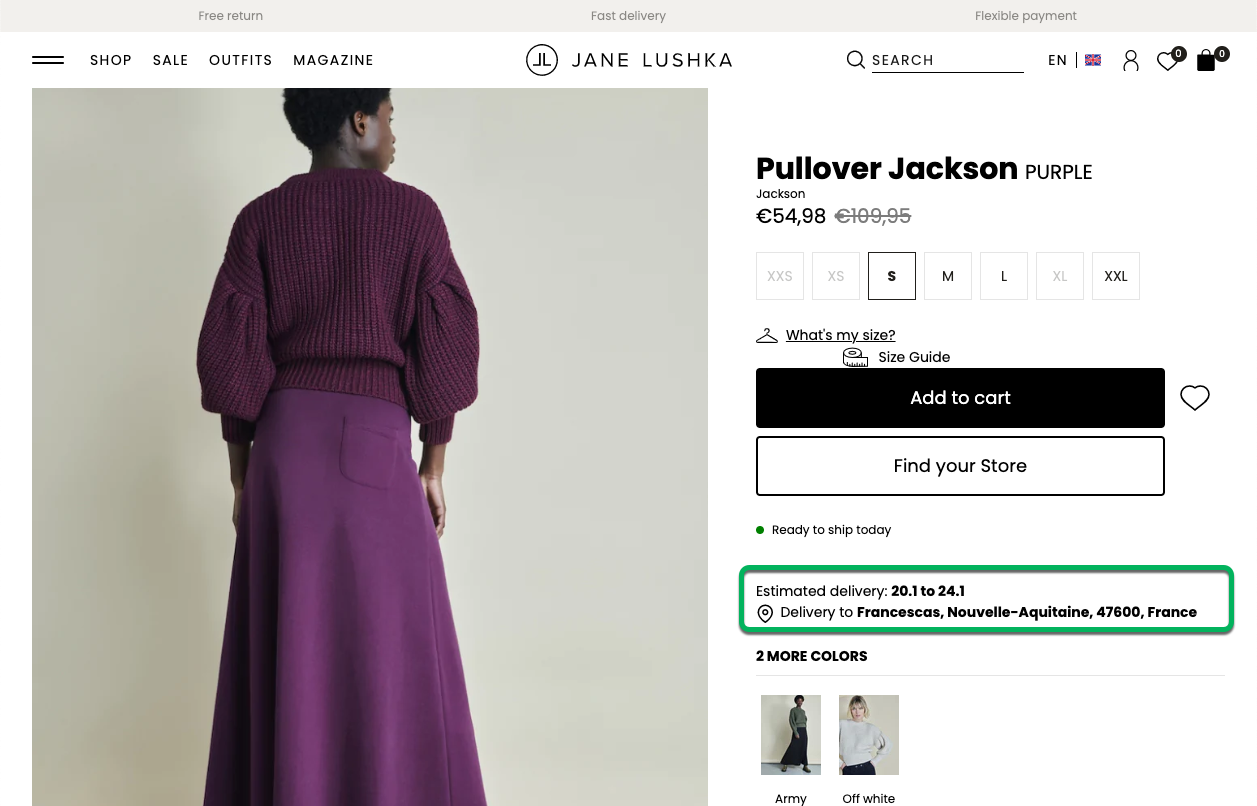
Understanding Key Concepts
Before we dive into the setup process, it's important to understand a few key concepts related to the EDD feature.
Estimated Date Source Priority
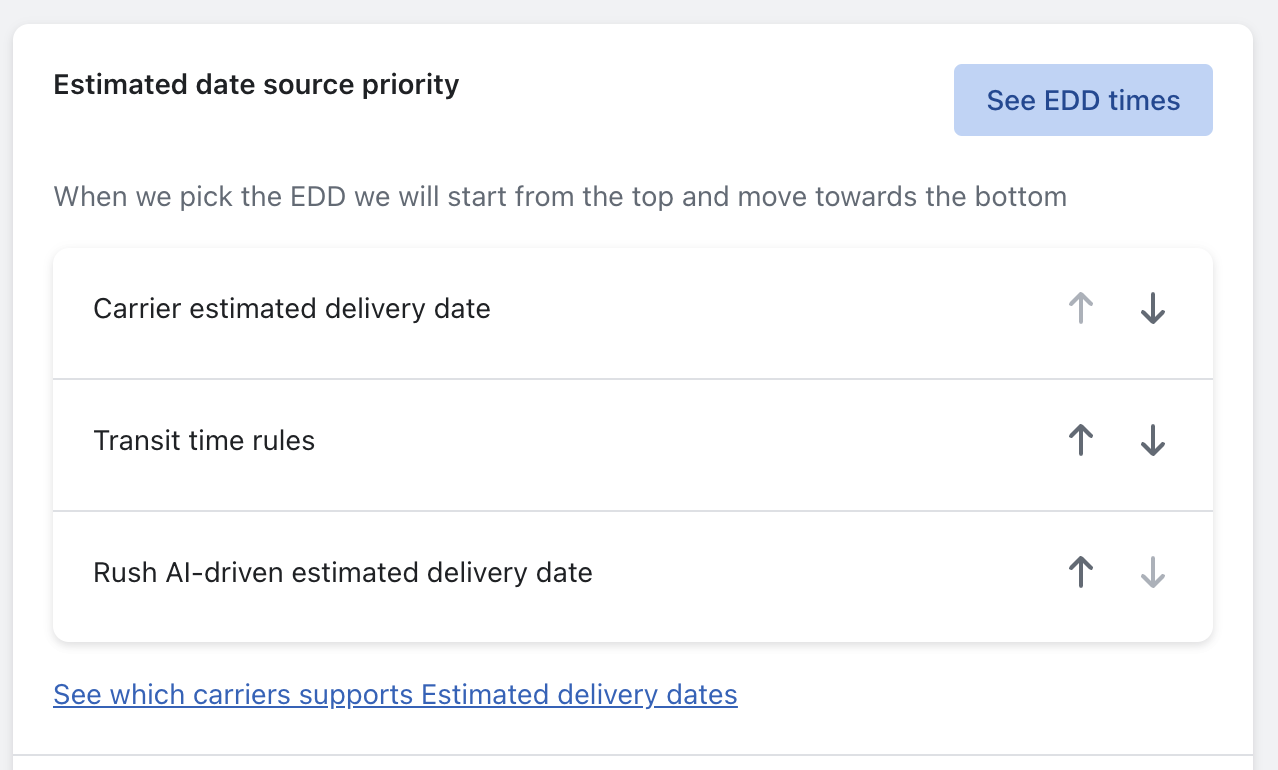
Rush uses three different sources to estimate delivery dates:
- Carrier Estimated Delivery Date: This is the delivery date provided by the carrier.
- Transit Time Rules: These are custom rules that you can set manually to determine transit and delivery dates.
- Rush AI-Driven Estimated Delivery Date: This is a delivery date predicted by Rush's AI model, which takes into account a wide range of factors.
These sources are prioritized in the order listed above. If the first source doesn't provide an estimated date, Rush will use the second source, and so on. If none of the sources provide an estimated date, no estimated delivery date will be shown.
Estimated Delivery Date Visibility
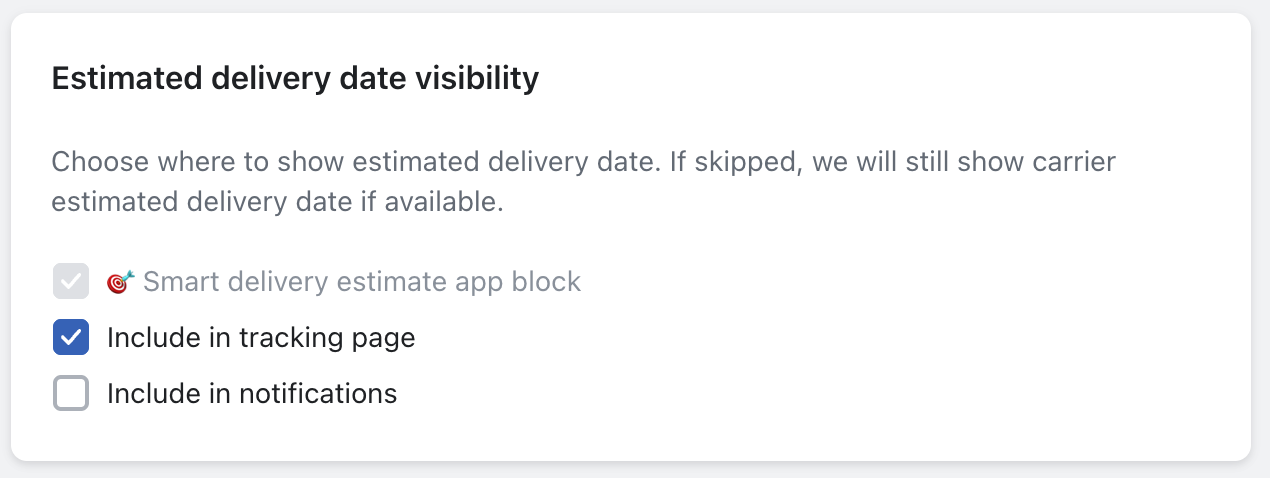
You can choose where to display the estimated delivery date. For example, you can show it on the tracking page, include it in notifications, or use the Smart Delivery Estimate app block in your Shopify theme to display it on the product page.
Order Fulfillment Days

This is the average number of days it takes for you to fulfill your orders. You can set this according to your business needs. The number of order fulfillment days will be added to the delivery transit time to calculate the final delivery date.
Rush AI
Rush's AI model uses data from millions of shipments processed each month to predict delivery dates with over 90% accuracy. It takes into account factors like carriers and their services, time and date of the week, holidays, customer city, products, and historical information about your package deliveries and similar stores' deliverables. However, like any AI model, it may not provide the best result right out of the box. It's recommended to provide at least a month of data (by syncing orders) and fine-tune the configurations to your needs. If you need help, you can always reach out to our support team.
Picking Date Range vs Single Date

We recommend showing date ranges, as they can provide the best-estimated delivery date range. Our AI model limits the ranges to a maximum of 5 business days, while most of our algorithm ranges are within 3 business days.
Transit Time Rules
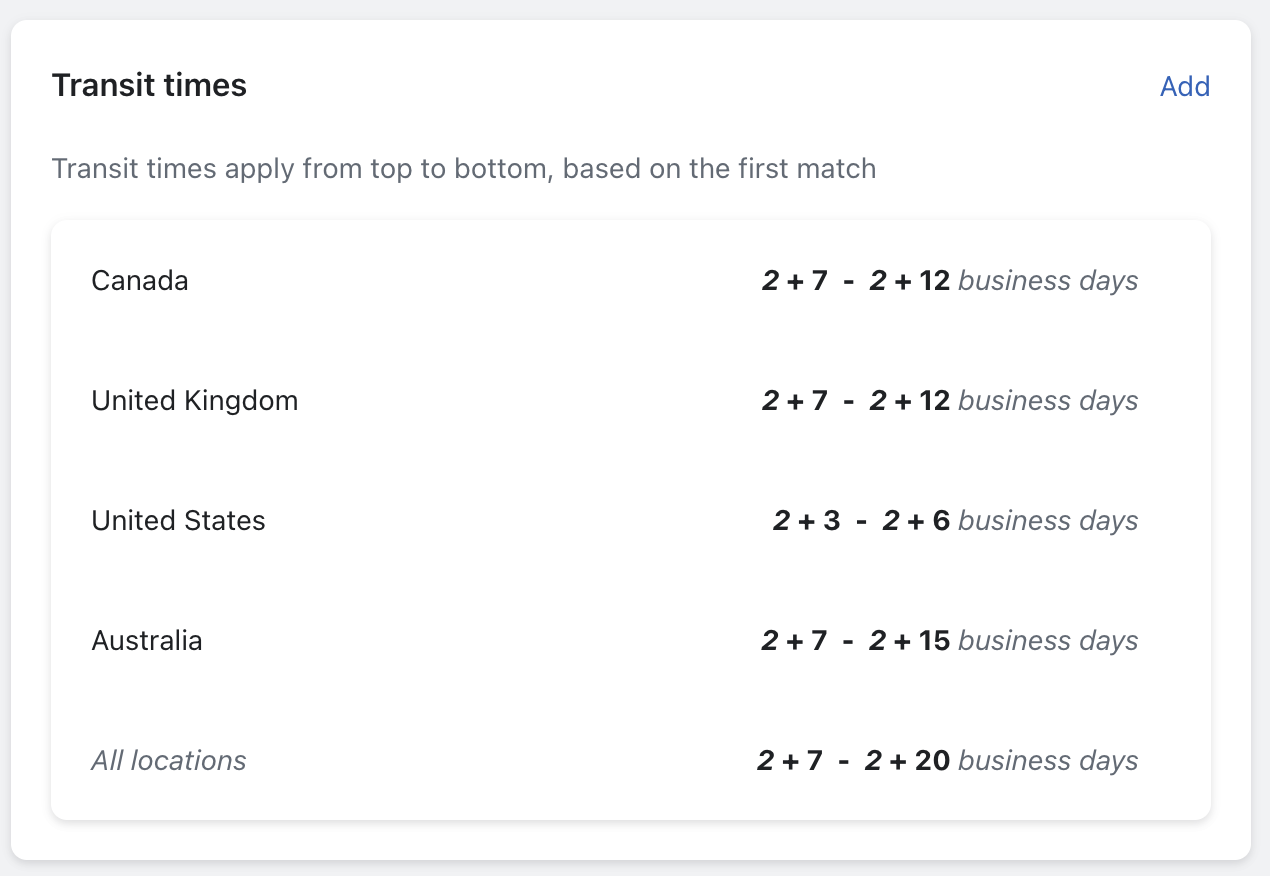
Transit time rules allow you to set specific delivery dates to be shown per country. These rules can be created by clicking on the "Add" button from the top right of the card.
You can always come back and change them by hovering over the rule and clicking on "edit." You can also delete any rule you've created. Rules can be created for single days or ranges and target specific countries.
Setting Up the EDD Feature
Now that you understand the key concepts let's move on to the setup process.
1. Navigate to the Apps section on the left navigation sidebar.
2. Click on "Rush – Ship, Track, Notify."
3. Select "Add-ons" from the navigation sidebar on the left and scroll down to the EDD section.
Click on the "Configure" button.
4. Click on "Activate." A confirmation message will appear, indicating that you've successfully activated the Smart Estimated Delivery Date feature.
After activating the feature, you can check how it looks on your tracking page
Or, you can follow the instructions provided here to set it up on your product page.

Viewing EDD Times
Once you've set up the EDD feature, you can view the estimated delivery times for different countries. To do this, click on the "See EDD times" button in the Estimated Date Source Priority section.
This will display a table with delivery ranges for your store based on your setup. The table includes the following information:
- Country: The country to which the range applies.
- Orders: The number of orders you had in the last 30 days and the total accuracy of all predictions based on our models.
- Average Days: The average number of delivery days, including business and weekend days.
- Average Business Days: The average number of delivery days, counting only business days.
- Estimated Delivery Date: The earliest day the item would be delivered if an order was placed from that country.
You can also export this information to a CSV file if needed.
Exclusions
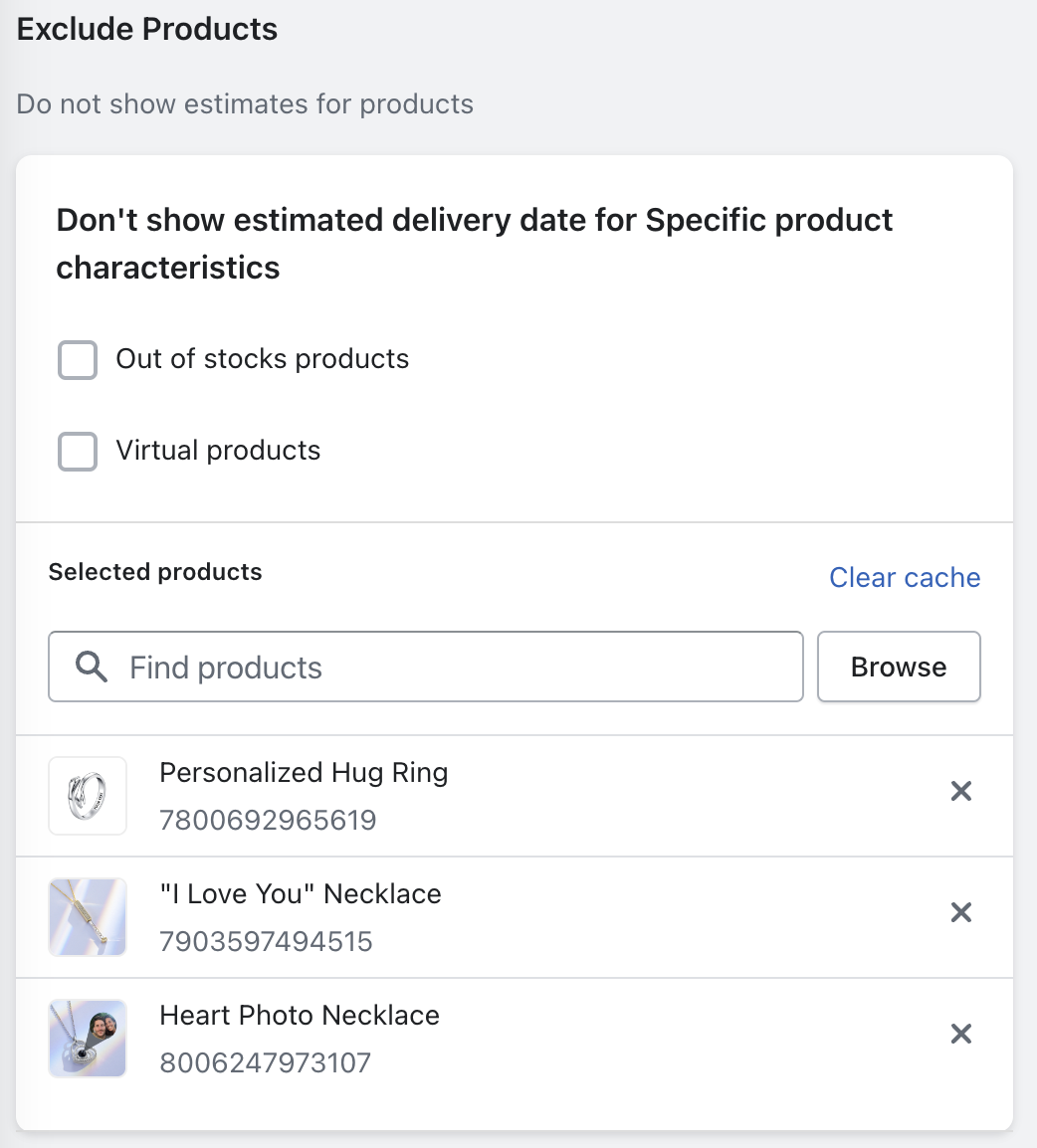
The EDD feature also allows you to exclude certain products or product types from delivery dates. For example, you can choose not to show delivery dates for virtual or out-of-stock products.
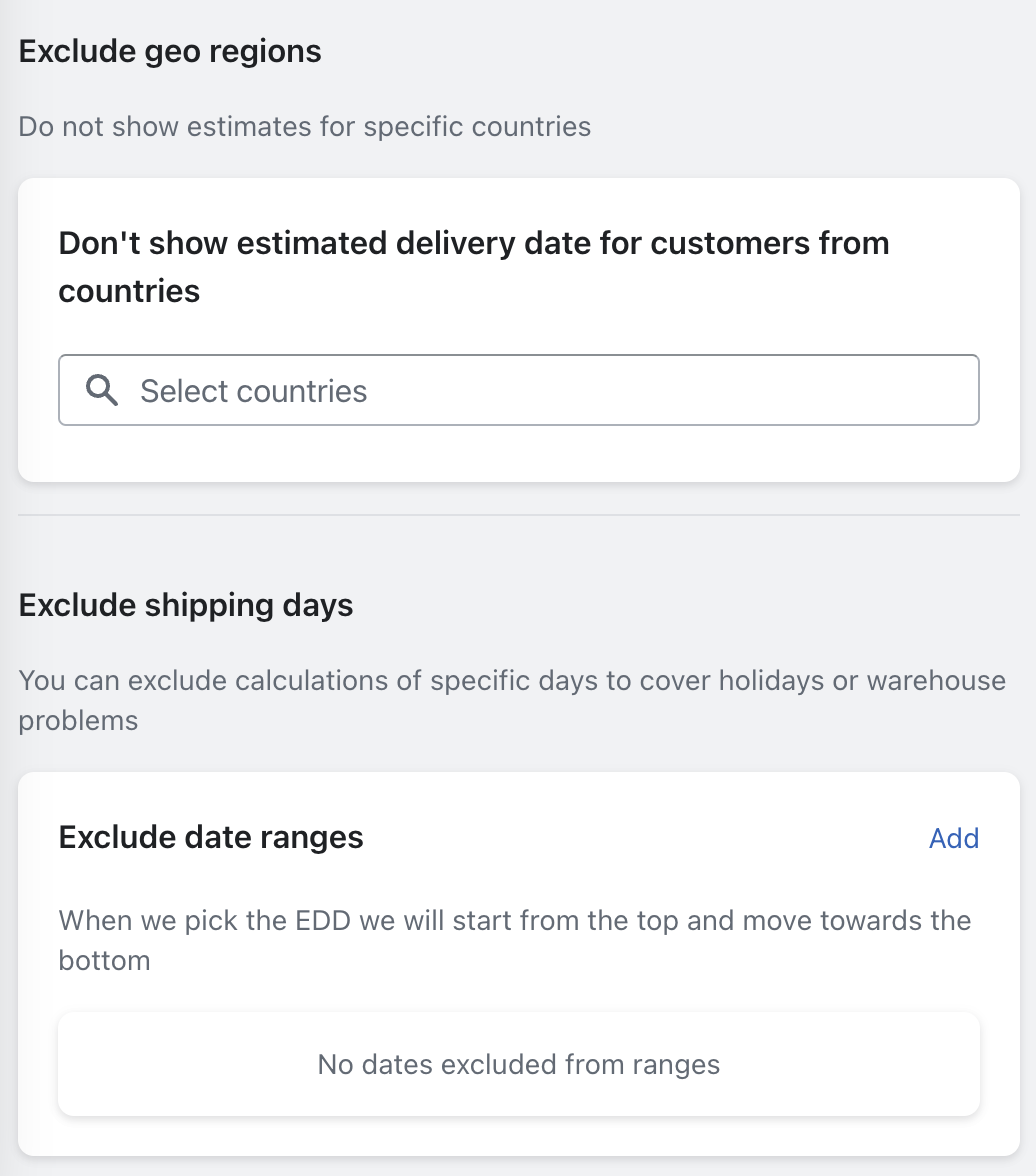
You can also exclude delivery dates based on the customer's geographical location or on specific dates when you won't be shipping, such as during holidays. These exclusions give you more control over how and when delivery dates are displayed.
Conclusion
The Smart Estimated Delivery Date feature in Rush is a powerful tool that can enhance your customer's shopping experience and boost your conversion rates. By understanding the key concepts and following the steps outlined in this guide, you can effectively set up and use this feature to meet your business needs.
Frequently Asked Questions
Q: If the Carrier Estimated Delivery is used as a source for estimates, how does this work when showing estimated delivery on the product page?
The Carrier Estimated Delivery can only provide information once an order has been placed, a tracking number is available, and the carrier has the capability to return an estimated delivery date. Therefore, it can only be used as a source on the tracking page and in notifications after an order is made. For showing estimated delivery on the product page before an order is placed, either Transit Time Rules or the Rush AI-Driven Estimated Delivery Date sources are used to provide a predictive date.
Q: If Rush processes millions of shipments, why is a month of data from my store still needed?
This is to ensure the best possible results. While Rush processes a vast number of shipments, each store uses different carriers, different carrier services and serves customers in different cities and countries. Additionally, each store has a different fulfillment locations, which means a different starting point for delivery. We need this information to understand better and optimize your specific business logistics.
If you have any questions or need further assistance, feel free to reach out to us. We're here to help!